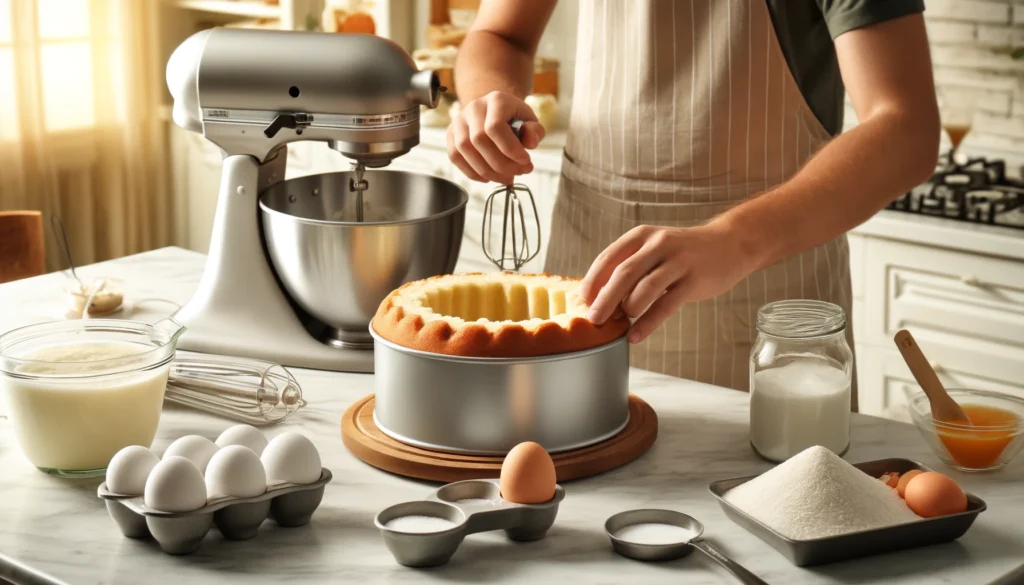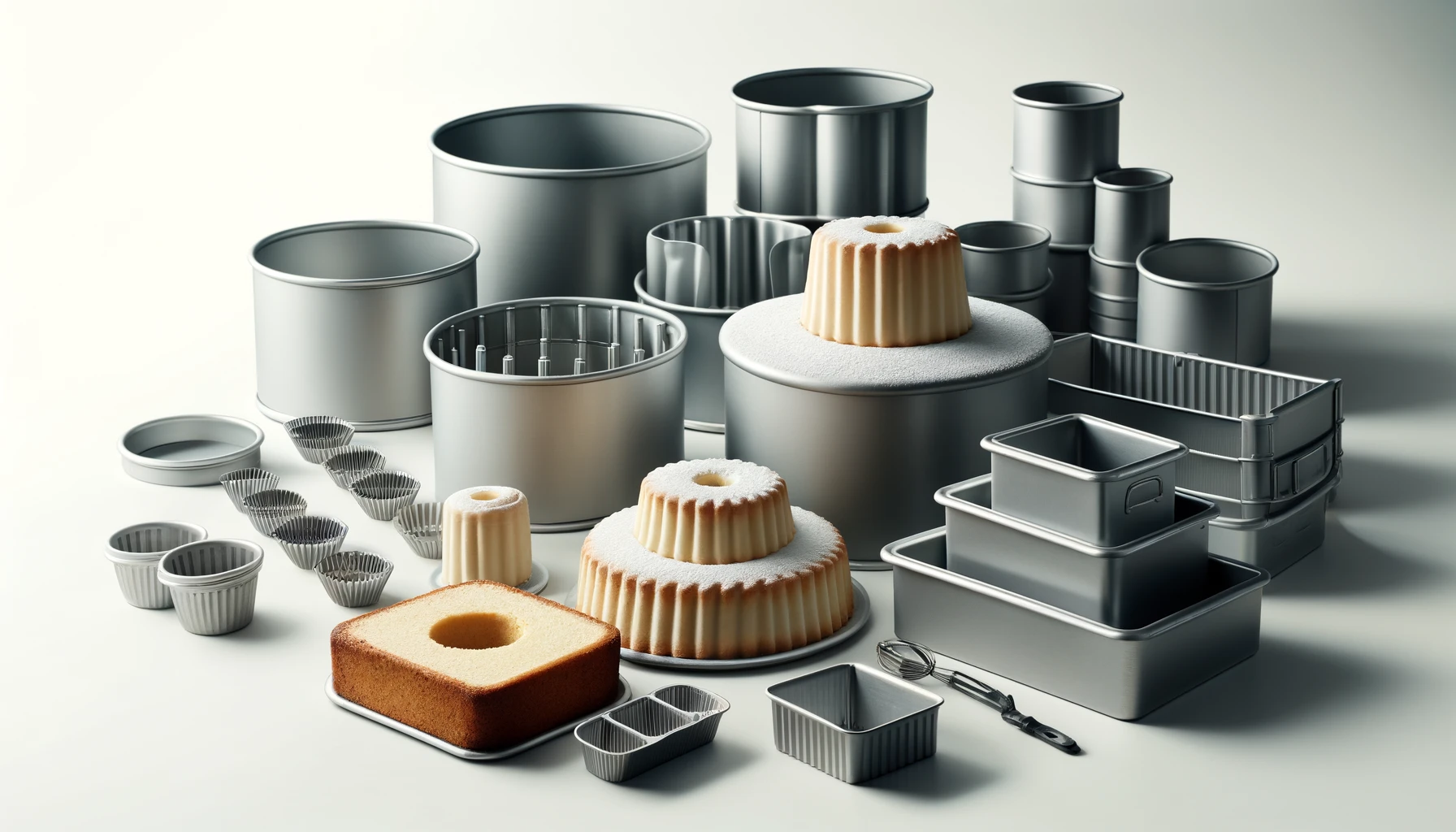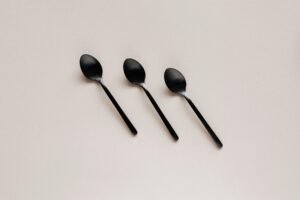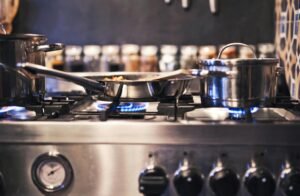
Are you ready to unlock the secrets to baking the perfect angel food cake? Look no further than the essential tool every baker needs in their kitchen: the angel food cake pan.
In this comprehensive guide, we will explore everything you need to know about angel food cake pans, from what makes them special to how to properly care for them.
Get ready to elevate your baking game and achieve that light, fluffy texture you’ve been dreaming of.
What Makes an Angel Food Cake Pan Special?
The distinctive design of an angel food cake pan is key to achieving the signature fluffy texture that sets angel food cake apart.
Unlike other cake pans, the angel food cake pan is uniquely constructed with a central tube, which enhances the baking process in several crucial ways.
This central tube facilitates better air circulation throughout the batter, promoting a more even rise and a consistent cooking temperature across the cake.
As a result, bakers can expect a uniform crumb structure without the denser or undercooked areas that can occur in standard pans.
Another hallmark feature of these pans is their tall, straight sides, which are not merely aesthetic but functional.
The batter for angel food cake is designed to climb these walls as it expands, gripping onto the ungreased surface to reach impressive heights.
This upward climb is essential for developing the light, airy structure that is the hallmark of a well-made angel food cake.
Without these vertical sides, the cake would not be able to support its own rise, leading to a denser, less desirable texture.
These specialized pans are typically constructed from materials that optimize heat distribution, such as aluminum.
The choice of material ensures that the cake bakes evenly, avoiding the common pitfalls of overbrowning or uneven baking that can plague other cakes.
The combination of the pan’s material, the central tube, and the tall sides work in concert to create the optimal conditions for angel food cake to rise and set properly, showcasing the thoughtful engineering behind this indispensable baking tool.
The Importance of Material in Angel Food Cake Pans
When selecting the perfect angel food cake pan, understanding the significance of the pan’s material is crucial for achieving that coveted light and airy result.
Aluminum stands out as the preferred choice for these specialized pans due to its superior heat conduction properties.
This ensures that heat is distributed evenly throughout the cake, preventing the common issues of uneven baking or overbrowning that can detract from the desired airy texture.
The advent of non-stick coatings on aluminum pans marks a significant advancement, offering ease of release without the need to grease the pan—a crucial step in preserving the structural integrity of angel food cakes.
However, it’s important to handle these pans with care to avoid scratching the surface, which could potentially affect the cake’s release and overall presentation.
In recent years, silicone has emerged as an alternative material for angel food cake pans. Its flexibility and inherent non-stick nature facilitate effortless demolding of the cake, reducing the risk of it sticking or tearing in the process.
While silicone pans are praised for their convenience and ease of storage, it’s essential to note that they may not offer the same level of heat distribution and structural support during baking as their aluminum counterparts.
Choosing between aluminum and silicone depends on personal preferences and priorities, such as ease of release versus heat conductivity.
Regardless of the material, investing in a high-quality angel food cake pan is a step towards mastering the art of baking the perfect angel food cake.
The Ideal Size and Shape for Angel Food Cake Pans
Navigating through the world of baking, the dimensions of an angel food cake pan play a pivotal role in the success of your culinary masterpiece.
Typically, these pans boast a 10-inch diameter, a size meticulously chosen to ensure the cake has sufficient room to rise and achieve its characteristic lofty height.
The significance of this standard sizing cannot be overstated, as it strikes a harmonious balance between volume and surface area, allowing for optimal heat distribution and aeration during the baking process.
Equally important to the size is the pan’s shape, especially its sides, which should be straight and perpendicular to the base.
This design is not arbitrary; it serves a critical function in the angel food cake’s development.
The batter relies on the ability to climb up the sides of the pan during baking, a feat that is facilitated by the pan’s uncoated, smooth metal surface.
The straight sides encourage a higher, more uniform rise, contributing to the cake’s iconic fluffy texture.
The depth of the pan is another aspect that warrants attention.
A deeper pan accommodates the batter’s expansion upward, preventing overflow while ensuring that the cake bakes evenly throughout.
This careful consideration of size and shape underscores the pan’s role not just as a container but as an active participant in the creation of the perfect angel food cake.
Choosing a pan that adheres to these specifications is a testament to a baker’s commitment to excellence, showcasing an understanding that the right tools are indispensable in crafting baked goods that are as visually impressive as they are delicious.
To Grease or Not to Grease: Preparing Your Angel Food Cake Pan

The preparation of your angel food cake pan might seem like a minor step, but it plays a pivotal role in the outcome of your cake.
The conventional wisdom for most baking endeavors recommends greasing the pan to ensure a smooth release. However, when it comes to angel food cake, this rule is flipped on its head.
The very essence of this cake’s structure relies on its ability to cling to the sides of the pan during the baking process. This ascent is critical for achieving the iconic, airy loft that angel food cake is celebrated for.
Thus, contrary to instinct, you should refrain from greasing your angel food cake pan. This may go against every baking instinct you have, but trust in the process.
The batter’s ability to adhere to the ungreased pan sides enables it to rise properly, creating that sought-after lightness.
Once baked, the cake’s release is facilitated not by greasing beforehand, but by cooling the cake upside down. This method allows gravity to gently pull the cake away from the pan’s sides once it has cooled and set.
By adhering to this counterintuitive step, you ensure your angel food cake reaches its fullest potential, both in height and texture.
Remember, when it comes to this particular dessert, the pan’s preparation is as crucial as the ingredients you pour into it.
Innovative Features in Modern Angel Food Cake Pans
In the ever-evolving world of baking, angel food cake pans have not been left behind.
They now boast a range of innovative features designed to simplify the baking process and enhance the overall experience. One of the standout features in modern iterations is the inclusion of a removable bottom.
This clever design simplifies the traditionally tricky process of releasing the angel food cake from the pan, ensuring a smooth, tear-free removal every time.
Additionally, manufacturers have introduced models with integrated handles.
These handles offer bakers greater control and ease when maneuvering the pan in and out of the oven, addressing a common challenge faced when handling the high, often awkwardly shaped pans.
The rise of silicone as a material in angel food cake pans brings its own set of benefits, including a naturally non-stick surface and an unmatched flexibility that allows bakers to easily ‘peel’ the pan away from the cake, minimizing the risk of damage to the cake’s structure and appearance.
It’s worth noting that while these modern features significantly enhance convenience and functionality, the choice of pan should align with the baker’s specific needs and preferences.
Whether prioritizing easy release, even heat distribution, or structural support for the cake, there’s a modern angel food cake pan equipped to meet those requirements, making the baking journey as enjoyable as the final product.
Cleaning and Maintenance of Your Angel Food Cake Pan
To preserve the pristine condition and functionality of your angel food cake pan, proper care and cleaning are imperative.
Immediately after use, it’s recommended to soak the pan in warm, soapy water to loosen any remnants of cake.
This initial step is crucial for ensuring that any stuck-on bits are easily removed, reducing the need for vigorous scrubbing that could damage the pan’s surface.
When washing, use a gentle, non-abrasive sponge or cloth.
Harsh scrubbing pads or wire brushes can scratch the surface, potentially affecting the release of future cakes and the overall aesthetic of your baked goods.
Scratches can also become collection points for oils and batter, complicating cleanup efforts down the line.
For pans with a non-stick coating, extra caution should be employed.
Avoid the temptation to use metal utensils for prying out leftover cake pieces, as these can create scratches and compromise the non-stick surface.
Opt instead for rubber or silicone spatulas that can gently remove any residues without causing harm.
Rinsing thoroughly after washing is equally important, ensuring that no soap residue remains. Soap residues can affect the taste of your next cake and may also impact the pan’s non-stick properties.
After rinsing, dry the pan completely before storing to prevent moisture buildup, which could lead to rust or corrosion, especially in pans made of aluminum or other susceptible materials.
For storage, find a place where the pan can lie flat or be hung without risk of denting or warping.
Proper alignment during storage ensures the pan will maintain its shape and balance, critical for even baking in future uses.
Following these simple guidelines will help ensure your angel food cake pan remains a valued tool in your baking repertoire for many delightful desserts to come.
Top 5 Angel Food Cake Pans on the Market

Choosing the right angel food cake pan can elevate your baking experience, ensuring that each cake turns out light, airy, and delicious.
After careful review, here are the top 5 angel food cake pans that stand out for their quality, design, and user satisfaction:
Nordic Ware Angel Food Cake Pan
Renowned for its durable construction, this aluminum pan boasts a non-stick surface for easy release. Its one-piece design includes a central tube that ensures even baking and a uniform crumb structure, making it a favorite among baking enthusiasts.
Wilton Angel Food Cake Pan
Wilton’s offering features a removable bottom and a non-stick coating, simplifying the process of cake removal without compromising on structure or taste. Its heavy-gauge construction promotes even heating, a key factor in achieving the perfect angel food cake.
Chicago Metallic Angel Food Cake Pan
This pan stands out for its two-piece design, which includes a removable bottom that assists in the effortless release of cakes. Made from heavy-duty aluminum, it guarantees superior heat conduction and a flawless, golden crust every time.
Cuisinart Chef’s Classic Angel Food Cake Pan
Cuisinart’s pan combines practicality with performance. Its non-stick surface, coupled with a dishwasher-safe label, offers both convenience and quality. The thick rolled edges prevent warping, ensuring a stable baking environment.
Calphalon Nonstick Angel Food Cake Pan
With its interlocking non-stick layers, Calphalon’s pan delivers high performance and durability. The heavy-gauge steel core heats evenly, while the tall sides support the cake’s iconic rise. This pan is an excellent choice for those seeking professional-level results at home.
Each of these pans has been carefully selected to meet the diverse needs of home bakers, ensuring that your next angel food cake is as beautiful to look at as it is to eat.
Common Mistakes to Avoid When Using an Angel Food Cake Pan
Navigating the use of an angel food cake pan can be tricky, and a few common errors can undermine the quality of your cake.
Overfilling
Firstly, be cautious not to overfill the pan. This mistake can lead to an overflowing batter, making a mess of your oven and negatively impacting the cake’s structure.
Greasing
Another misstep is the temptation to grease the pan. While greasing is a standard practice for most cake recipes, it hinders the angel food cake’s ability to climb the sides of the pan, crucial for its signature rise and texture.
Also, avoid using a pan that has dents or scratches. Such imperfections can disrupt the cake’s uniformity in texture and appearance, detracting from the visual appeal and consistency of your dessert.
Lastly, patience is key; removing the cake from the pan too prematurely can result in a cake that collapses under its own weight.
Keeping these pitfalls in mind will help ensure your angel food cake turns out light, airy, and visually stunning.
Troubleshooting: When Angel Food Cake Goes Wrong
Encountering problems with your angel food cake can be disheartening, but most issues have straightforward solutions.
A sunken center, for instance, often results from underbaking or a sudden change in temperature.
Ensure your oven is properly preheated and avoid opening the oven door frequently during baking. For a cake that’s too dense, the culprit could be overmixing the batter or not sifting the flour adequately.
Gentle folding of the ingredients and careful sifting can introduce more air into the batter, leading to a lighter texture.
If the cake sticks to the pan, it might be due to not cooling the cake upside down or attempting to remove the cake too soon.
Allow ample time for the cake to cool completely in its inverted position before attempting to remove it from the pan. This cooling method helps the cake to naturally detach from the sides of the pan.
Should your cake have an uneven rise, check the evenness of your oven’s temperature distribution or the pan’s placement in the oven.
Using an oven thermometer can help you ensure accurate temperature settings, and placing the pan in the center of the oven rack promotes even heat circulation.
Addressing these common baking challenges can help you master the art of the perfect angel food cake.
Beyond Angel Food: Other Uses for Your Angel Food Cake Pan
The versatility of an angel food cake pan extends far beyond its traditional use. Its unique design, characterized by a central tube and tall sides, makes it an excellent tool for a variety of baking and cooking projects.
Consider venturing into the world of chiffon or sponge cakes, which, like angel food cake, benefit from the pan’s ability to promote even baking and a uniform rise.
These light and airy desserts will turn out perfectly when using this specialized pan. Additionally, don’t shy away from experimenting with savory dishes.
The pan’s shape and size make it suitable for baking impressive quiches and deep-dish casseroles, offering a unique presentation that’s sure to delight your guests.
The pan can also serve as a mold for gelatin desserts or frozen treats, providing an elegant shape that elevates the presentation of simple recipes.
Embracing the multifunctional nature of your angel food cake pan can inspire a range of culinary creations, from sweet to savory, showcasing its value as a versatile kitchen tool.
Related Articles:
A Comprehensive Review of the Best Portable Dishwasher on the Market
Why is it Named Better Than Sex Cake? A Tasty Exploration
As an Amazon Associate, I earn commission from qualifying purchases.





